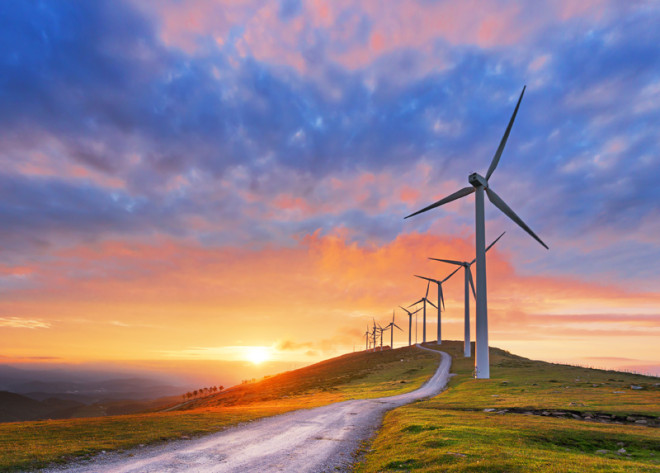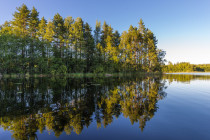Wind farms inspire a certain elegance and beauty. Like a mechanical forest, sleek, silvery turbines dot the landscape and spin in unison with the wind. It’s an alternative energy source that seems simple enough: the wind blows making the turbines move and somehow energy is produced. It turns out, however, that wind dynamics are not quite that simple. Wind turbines benefit from some strategic coordination to work efficiently together to produce the most power possible. Specifically, there can be no drafting or slipstreaming at play in a hard-working wind farm. What works well in the Tour de France is actually detrimental in a wind farm.
David Johnson, mechanical engineering professor and head of the Wind Energy Group at the University of Waterloo, explains: “Wind farms are not in a nice clean uniform wind. They can be disrupted by the one upstream or the one beside them, so there’s a lot more that needs to be worked out when it comes to placement and control of turbines.” So while drafting works well for cyclists, it has the opposite effect on turbines because it means less wind to power adjacent turbines. Traditional strategies for improving turbine efficiency have centred on innovating individual turbines by using lighter, stronger materials to construct the blades and building taller turbines. Current strategies aim to improve how turbines work together – in other words, taking advantage of a team approach, minus the peloton effect. This is where the Internet of Things (IoT) seeks to help.
Whether you call it the Industrial Internet, machine-to-machine (M2M) technology, or IoT, the underlying principle is largely the same. Using wired or wireless connections, devices or machines transmit information to each other allowing for aggregation of data, as well as external control the machines themselves. In the wind-farming world, a software platform called PowerUp, developed by GE, uses sensors on turbines to monitor things like wind speed, temperature, pitch and power output and transmits the data for analysis.
Using the data, PowerUp communicates with the turbines to adjust rotations in order to maximize kinetic energy production. It’s like a strategically choreographed wind dance that makes the turbines move in optimal coordination together. The objective, according to Keith Longtin, general manager of wind products for GE Renewable Energy, is “rather than simply looking at an individual wind turbine spinning, we’re looking at ways of using the data from turbines to make them communicate – or enhance the way they operate together, in concert, as an entire power plant.” In 2013, GE received a contract from E. ON Climate and Renewables North America (E.ON), which is one the world’s largest owners of renewable power projects, to upgrade 469 of its GE 1.5-77 wind turbines with the PowerUp platform.
Since the software was installed on E.ON wind farms, they have reported an additional turbine production of 40 gigawatt hours of energy per year, which is equivalent to powering approximately 3,500 homes. In addition to offering up to 5% increased annual energy output, the PowerUp monitoring service helps identify issues before mechanical failure in order to mitigate unproductive downtime. “The outcomes-based approach aligns well with our goals of providing cleaner, better energy at a more affordable price. Investment in wind energy has led to technological advances like PowerUp that continue to make renewables more and more competitive with traditional forms of energy,” explains Steve Trenholm, chairman of E.ON.
It’s innovations like this that help build a stronger case for viable, reliable, clean sources of energy. As Longtin explains: “When you combine cost-competitive, data-enabled renewables technology that can produce a zero-emissions, zero-water use source of electricity that is in strong demand, the benefit to all parties is easy to see.” It’s wonderful to see something come together and work in unison – whether it’s a team of cyclists, a group of dancers, or a field of spinning wind turbines – to achieve something beautiful.
About The Author

-
Serial Entrepreneur, Technologist and Inventor.
My objective is to develop useful products that have a net positive effect in the lives of those that use them and the environment that we live in.
CEO of Mission LED Lighting Company Ltd.
- 2017.05.24LED factsWhy Are Cars Switching to LEDs if They’re Too Bright?
- 2017.05.09Be green & saveHow to Easily Replace T8 Fluorescent Tubes With LED
- 2017.03.07Build a better future7 Things About Explosion Proof LED Lighting You Should Know
- 2017.02.28Be green & saveWhy We Love LED Grow Lights (And You Should, Too!)





Leave a Reply